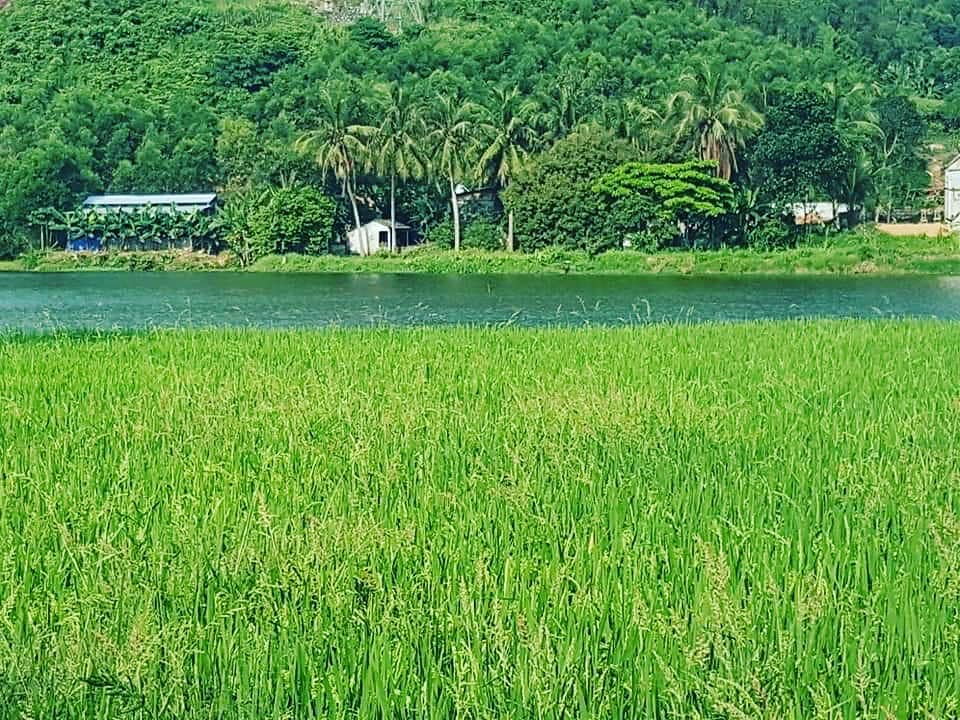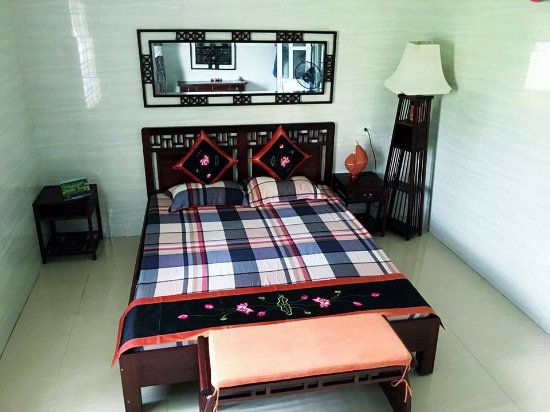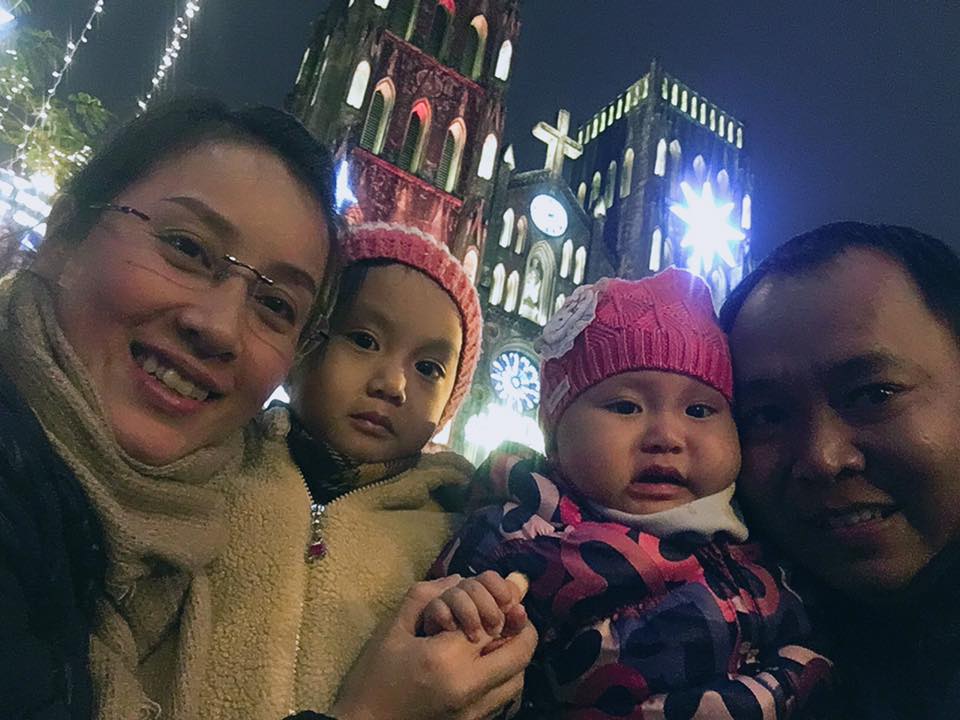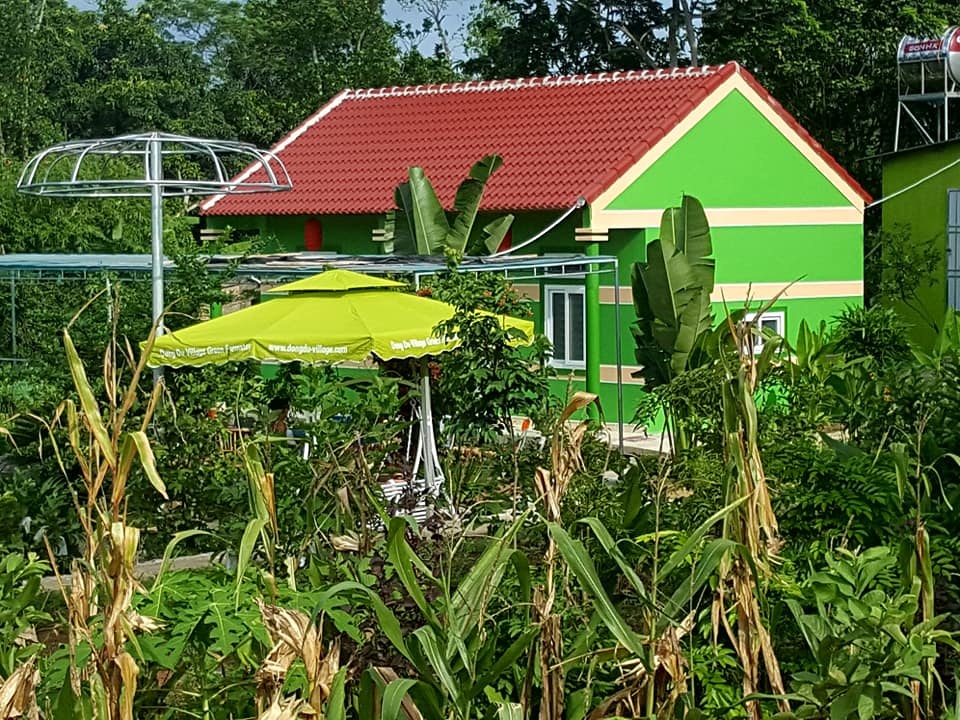Travel Blog
Dong Du Village Lakeside Farmstays
Village embraces ancient culture and civilazation
Updated: 31/8/2018 | 7:27:29 PM
We took a stunningtrip to Vạc Village in the western part of the central province of Nghệ An. Vạc Village is just a small quaint village that appears very far away in Dong Hieu, Nghia Dan, Nghe An
From Hồ Chí Minh National Highway passing the Phủ Quỳ area, we turned right and drove straight for dozens of kilometres toward Thái Hòa Town. We were a little surprised at the appearance of a young urban area rising on the ancient land with offices, residential houses and bustling streets.
On the main road Nguyễn Trãi, we turned onto a street heading to the south named Làng Vạc. We followed that road to the outskirts of the city, passing several kilometres of low and high hills.
Vạc Village is beautiful, with tranquil houses hidden under the shadows of big green trees. Locals seem to be wealthy. They have big, new houses. We got the feeling that in this thousand-year-old land, generation after generation has led a simple & hard-working life.

Along the road passing a big marshland, we visited Vạc Village Temple, which has been renovated as part of a plan to restore and develop tourism at the ancient relic site.
The temple was built on a high hill site, resting on Rú Giang Mountain and looking over an area of lake and dams.
More than 20 staircases lead to the main temple with ancient style pillars and white stone sculptures of elephants. The complex hosts various temples dedicated to the Hùng kings and Mother Goddess, plus an exhibition hall displaying ancient objects. The man-made structure mingles with green trees to create a solemn and graceful atmosphere.
At the exhibition hall, visitors can find materials and objects revealing the history of people in this area 2,000 years ago. The most important objects unearthed from the site have been displayed at national museums in Hà Nội and at culture centres in the world. A small number of objects have been kept here, many of which have been donated by locals.
During the fierce American war of destruction against North Việt Nam, archaeologists excavated the site for the first time in 1972. From then until 1999, the site was excavated five times with support from Japanese experts.
The scientists found out that it was a typical excavation site, showing abundant evidence of ancient Vietnamese civilisation of over 2,000 years ago.
After five excavations over a total area of 3ha, more than 370 tombs were discovered, making it the site with the greatest number of tombs among all ancient Đông Sơn civilization areas.
Thousands of bronze and ceramic objects, especially 14 bronze drums dating back 2,100 years ago, were unearthed at the site, which proves that ancient people of the bronze era used farming tools like hoes and had a diversified spiritual life.
“The early community in Vạc Village was comprised of mountain residents in Nghệ An Province, who made contributions to the formation of the Vietnamese people in early history,” said Nguyễn Giang Hải, director of the Việt Nam Archaeology Institute.
Researcher Hoàng Xuân Chinh from the same institute held that the Vạc Village archaeological site can be compared with other noted relics of the Đông Sơn civilisation in the Hồng (Red) River Delta, like Vinh Quang, Cả Village, Sơn Vi, Gò Mun or Phùng Nguyên in present Phú Thọ Province.
“I also think it’s at an even higher level in terms of importance,” he said.
“Especially at the time [1st century BC], Chinese Han invaders conquered the country,” he said. “They plundered and destroyed bronze drums. They aimed to destroy Lạc Việt’s culture. Yet people in Vạc Village still kept bronze drums and other objects proving their thriving identity in the period.”
According to Phạm Văn Thạch, deputy chairman of People’s Committee of Thái Hòa Town, the Nghệ An authorities approved a plan to establish a preservation site for the Vạc Village Archaeological Relic covering 156ha in 2012.
The plan has turned the village into a national historical and cultural relic site combining ecological tourism, a game complex and a research centre.
“Beside temples and exhibition halls, other functional buildings like an administration area, models of ancient houses, an archaeological site, research centre and boat dock will be built,” he said.
(Source: Dong Du Village Lakeside Eco Farmstay)
Other news
- Le tourisme durable, une idée qui pousse dans le monde entier !
- Way to Pu Mat Natural Park, Con Cuong, Nghe An
- Textiles of Vietnam
- Traditional Textiles villages in Nghe An province
- The treasure of Western Nghe An
- Phu Xai Lai Leng Summit - Nghe An
- Parc national de Phong Nha – Ke Bang
- La beauté des champs de tournesols irrésistible à Nghe An
- Summer Getaway at Pu Mat National Park, Nghe An, Vietnam
- The Western Nghe An Biosphere Reserve











